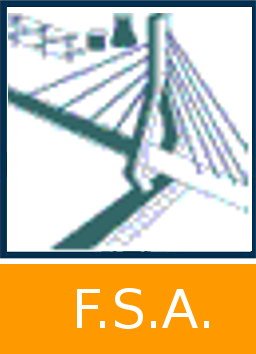Ivanov, Svilen Georgiev 
Promoteur(s) : Lungu, Adrian
Date de soutenance : 2013 • URL permanente : http://hdl.handle.net/2268.2/6121
Détails
| Titre : | Hydrodynamic studies on Hull-Propeller-Rudder Interaction |
| Auteur : | Ivanov, Svilen Georgiev 
|
| Date de soutenance : | 2013 |
| Promoteur(s) : | Lungu, Adrian |
| Membre(s) du jury : | Ferrant, Pierre |
| Langue : | Anglais |
| Nombre de pages : | 83 |
| Discipline(s) : | Ingénierie, informatique & technologie > Ingénierie civile |
| Public cible : | Chercheurs Professionnels du domaine Etudiants |
| Institution(s) : | Université de Liège, Liège, Belgique |
| Diplôme : | Master de spécialisation en construction navale |
| Faculté : | Mémoires de la Faculté des Sciences appliquées |
Résumé
[en] Description of the topic – Each of the components investigated in this study ( hull , propeller, rudder) are disturbing the flow in a specific way, depending on their geometrical characteristics. The interactions that appear between hull, propeller and rudder are complicated and difficult to determine. The flow developed around these parts is governed by some challenging physical phenomena. Investigating the interaction between the hull , propeller and rudder – is the aim of the present work.
The Objectives are: To perform a gird convergence study in order to choose the most suitable grid for the present research. To validate the numerical methodology which will be used in order to determine ship resistance and flow features for the bare hull case. To validate the lifting line numerical methodology used for propeller computation. To use propeller open water and self-propulsion computational results in order to determine the propulsion coefficients (ITTC'78 procedure). To determine the hydrodynamic forces and moments developed on the hull equiped with propeller and rudder during static rudder motion.
A simplified potential theory method and a boundary layer theory based method, both implemented in the SHIPFLOW code, are used in order to obtain the wave resistance and the frictional resistance of the 1:67 model scale KCS ship. The results are compared with experimental reference results and the error is estimated. Also, the Reynolds Averaged Navier Stokes equation (RANS) are used in order to compute the viscous resistance, axial velocities, and pressure coefficient for the bare hull, the hull with propeller and the hull with rudder and propeller. The results are also compared with reference results. The potential flow computation shows good agreement between numerical and experimental results. The wave pattern, computed with the potential flow solver is almost 100% similar with EFD results. The RANS solution for bare hull shows much more real picture about the resistance, which means bigger error in the low speeds and even less than 1 % error in the speed of interest.
Using potential and viscous CFD methods the present study offers an image of the flow pattern developed around the abovementioned configurations, bare hull ship resistance, propulsion coefficients and hydrodynamic forces and moments developed on the fully equiped hull being determined.
Fichier(s)
Document(s)
Citer ce mémoire
L'Université de Liège ne garantit pas la qualité scientifique de ces travaux d'étudiants ni l'exactitude de l'ensemble des informations qu'ils contiennent.


 Master Thesis Online
Master Thesis Online





